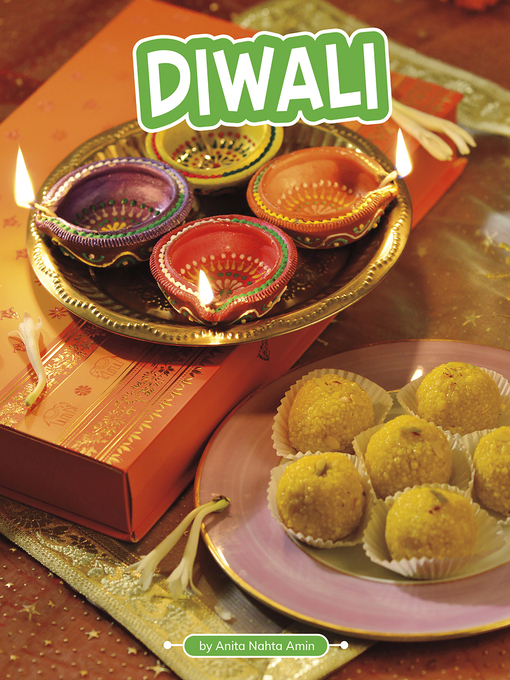WHAT IS DIWALI? –
Whiz! Bang! Pop! Fireworks burst across the night sky. All over India, small oil lamps light up the darkness. They glow in homes and shops. Neighbors give each other sweets as gifts. Nut fudge! Sweet milk patties! Bean balls!
It is a time of joy. It is Diwali. It is the Festival of Lights. Some people call it Deepavali. This means “row of lights” in Sanskrit. This Indian language is the oldest in the world.
More than 1 billion people in the world celebrate Diwali. In India, it is a big holiday. People of most faiths, or religions, join in the fun.
Some Hindus honor a holy king during Diwali. Some honor gods and goddesses. Hindu myths are stories from long ago. These myths said gods and goddesses destroyed evil beings.
Diwali can last for five days. The holiday reminds people that good is stronger than evil.
For people who are Sikhs, Diwali honors a guru. He was a teacher who was freed from a bad leader long ago.
Jains and Buddhists celebrate too. They honor the teachers who started their religions.
WHEN IS DIWALI? –
The main day of Diwali is on the fifteenth day of the Hindu month, Kartik. No moon shines that night. It is the darkest night of the month. It is also the Hindu New Year.
The Hindu calendar is lunar. It is based on the moon. Most people in the world use the solar calendar. Solar has to do with the sun.
Solar and lunar dates don’t always match. On the solar calendar, Diwali dates change each year. The holiday can fall in October or November.
FIVE DAYS OF FUN –
Day 1 –
Sweep the floors. Wipe the walls. Clean the cupboards. On the first day of Diwali, people clean their homes, offices, and temples.
People make rangoli art. Colored sand is spread on the floor. People might use flowers or rice instead. The sand, flowers, or rice are made into shapes, such as flowers or birds.
Garlands are hung around doors. The garlands are strings of flowers and mango leaves.
People hope Lakshmi will see their clean, pretty places. She is the Hindu goddess of good luck and wealth. People pray that she will bless them.
The first day is also a big shopping day. People buy gold. They buy cooking tools. They buy clothes and gifts.
Diyas are lit at night. They are set out to light up the darkest night. The diya is a symbol. A person’s inner light is stronger than the darkness of evil. Diyas welcome Lakshmi too.
Some people light diyas to honor Rama. A Hindu myth says a demon, or evil spirit, made Rama leave his lands. Years later, Rama destroyed the demon. People lit diyas to welcome him back.
Day 2 –
In parts of southern India, day two is the main day. But for most people, it is like Diwali Eve. It is called Little Diwali.
The day starts with a holy bath. Everyone in a household gets one. They say it cleans away evil. Later, people pray for dead loved ones.
Then everyone gets ready for guests. They cook or buy sweets. Family and friends visit each other.
Day 3 –
It is Diwali Day! It is time for fun, feasts, and fireworks. People dress up in fancy clothes. They go to parties. They give gifts to loved ones. The gifts are sweets, coins, or gold.
Diyas, fireworks, and sparklers light up the night. People pray at temples. They pray that Lakshmi will bless them. They play card games. People of many faiths celebrate.
Day 4 –
The new year starts on the fourth day. Shop owners pray for a year of good sales. They start a new book called a ledger. It keeps track of what the owner has bought and sold.
Husbands and wives honor their love. The wife prays for her husband’s good health. Then he gives her gifts.
Day 5 –
The last day is for siblings. Brothers visit their sisters. They honor their love. A sister prays for her brother’s good health. She dots red paste and dry rice on his forehead. This is for good luck.
A brother gives his sister gifts. He promises to take care of her. Then they will eat a meal together.
Comprehension Questions
1. When is the main day of Diwali?
A. The thirtieth day of the Hindu month
B. The fifteenth day of the Hindu month
C. The first day of the Hindu month
A. Day 1
B. Day 2
C. Day 3
Your Thoughts
Vocabulary
4. List any vocabulary words below.

